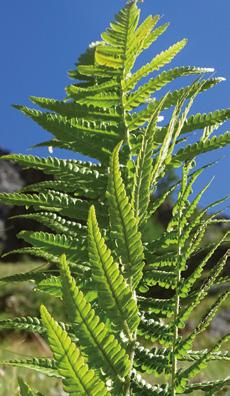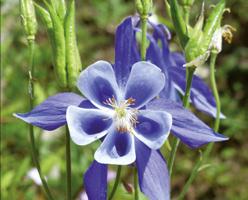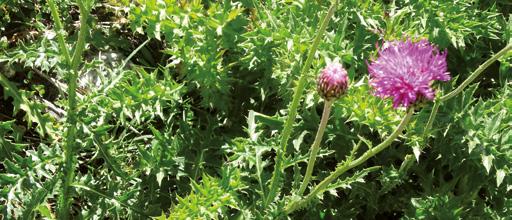
3 minute read
Notes on Flora and Fauna
The flora and fauna of the Mont Blanc massif has a rich and varied heritage. In fact, all the typical animal and plant species that are found in the Western Alps can be found here. However, the soil on the Massif is quite acidic due to the magmatic rocks that it is made of. Furthermore, the steep walls of the mountains and the strong forces exerted by the glaciers have made the area tough for flora and fauna to prosper.
As often happens in the animal and plant kingdom the various species are subdivided by the elevation at which they can proliferate. At different elevation ranges there are different habitat niches that certain species of animals either stick to or shift between; as for example the fox and the chamois.
The various levels that define the different elevation habitats are:
Sub Alpine: ranges from 800-1,000 metres to 2,000-2,200 metres above sea level Alpine: ranges from 2,000-2,200 metres to 2,600-2,800 metres above sea level Nival: extends from 2,600-2,800 to the summits that exceed this elevation
Each of these elevations has its own peculiar characteristics in terms of both flora and fauna.
In the Sub Alpine you will find mostly coniferous plants such as larch and fir trees whose underbrush is home to species such as the Lilium Martagnon and the Acetosella Vulgaris. On the other hand, the species of animal that inhabit this elevation are the chamois that also shifts between habitats, stags and roe-deer. It is also common to find squirrels, as well as the red, green, and black woodpeckers. At the top section of this elevation, between 1,900-2,200 metres, where the forest of coniferous plants starts to thin out and give way to lower bushes that are more resistant to the altitude, you will find an abundance of blueberries and rhododendrons. In this belt you also find animals such as the pheasant that are well known for their mating antics that are often times violent. The Alpine area is characterised by thin and pointy grasslands that are resistant to the snow and cold, different types of moss and lichens and a multitude of spectacular flowers, the most renowned of which are the Stella Alpina, the Genziana Acaule, the Genziana di Clusius and the rare Campanula Tiroside. The higher part of this area is scarce in vegetation and is often characterised by glacial moraines and rocky glacial deposits. In this habitat the animal species that you are most likely to meet are ibexes, marmots, royal falcons and (thanks to a species reintroduction project carried out in the 80s) the Avvoltoi degli Agnelli. You may also encounter more elusive animals such as the Mountain Hare, the Ermellino and the Lagopede of the alps, all of which are species that change colour according to the season. In the Nival plain vegetation is virtually inexistent if not for a limited number of plants that are able to adapt and grow in this extremely tough environment. These include the Ranuncolo dei Ghiacciai, and the Sassifraga a Due Fiori. This belt is inhospitable to large mammals and they will only spend a limited amount of time here. You will however find some species of birds such as the Gracchio Alpino and the Picchio Muraiolo.
The various exposures and types of soil found on the massif mean that in different areas you will encounter different plants and animals, even if the variation is minimal: for example, the Genziana delle Alpi is often found on the Swiss and French sides and not on the Italian side.
An admirable project that allows us to gain a good and immediate understanding of the areas flora is the well-maintained botanical garden found just outside of the Pavillon station of the Skyway. Her you can observe and learn about the various species that inhabit these valleys.
We also take the chance to remind you that many of these plants and animals are protected by regional and national laws and we invite you to respect them and use appropriate behaviour.
Chamois
Great spotted woodpecker


Blueberries

Aquilegia Alpina



Giglio Martagone

Wild artichoke








